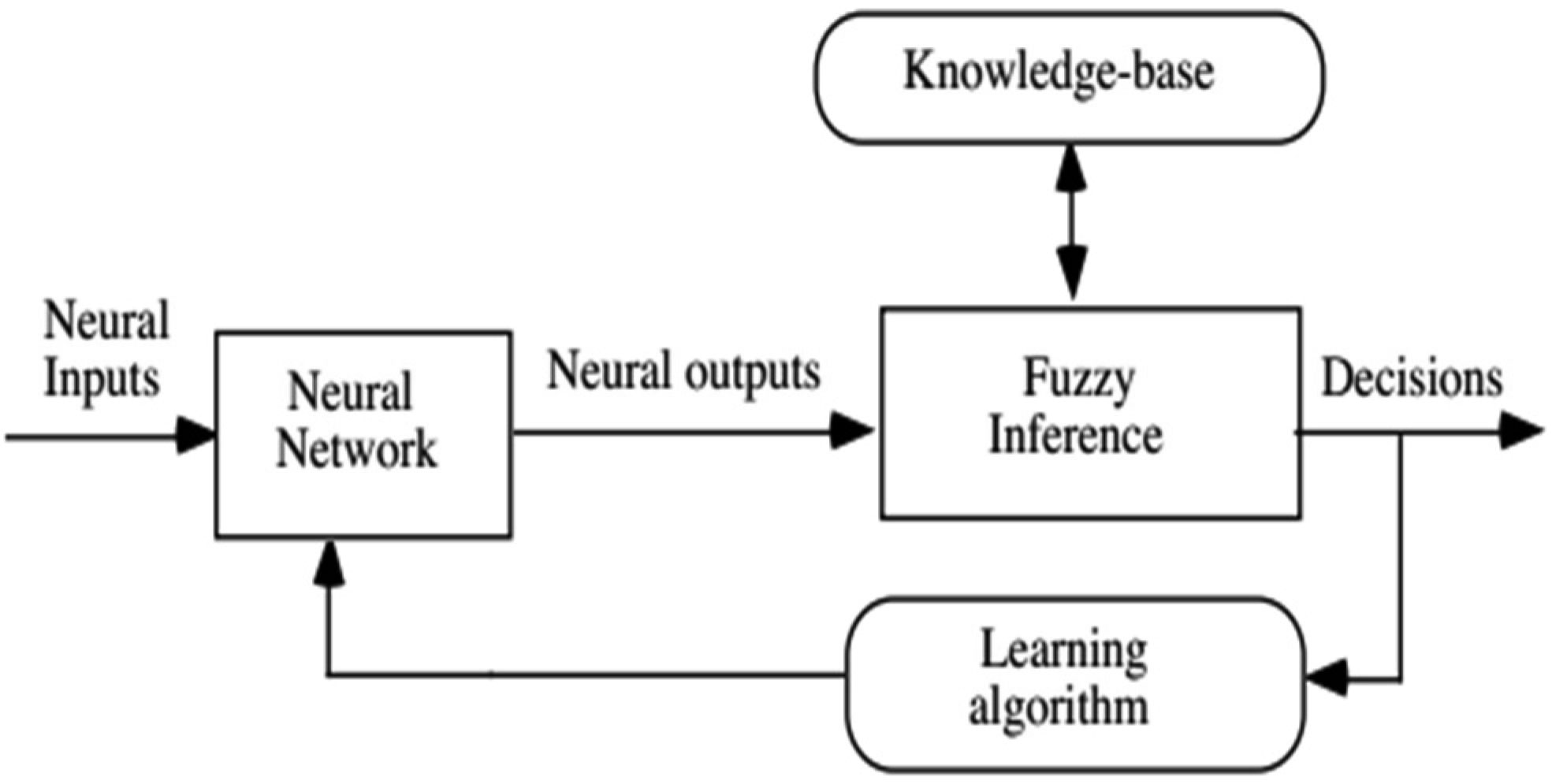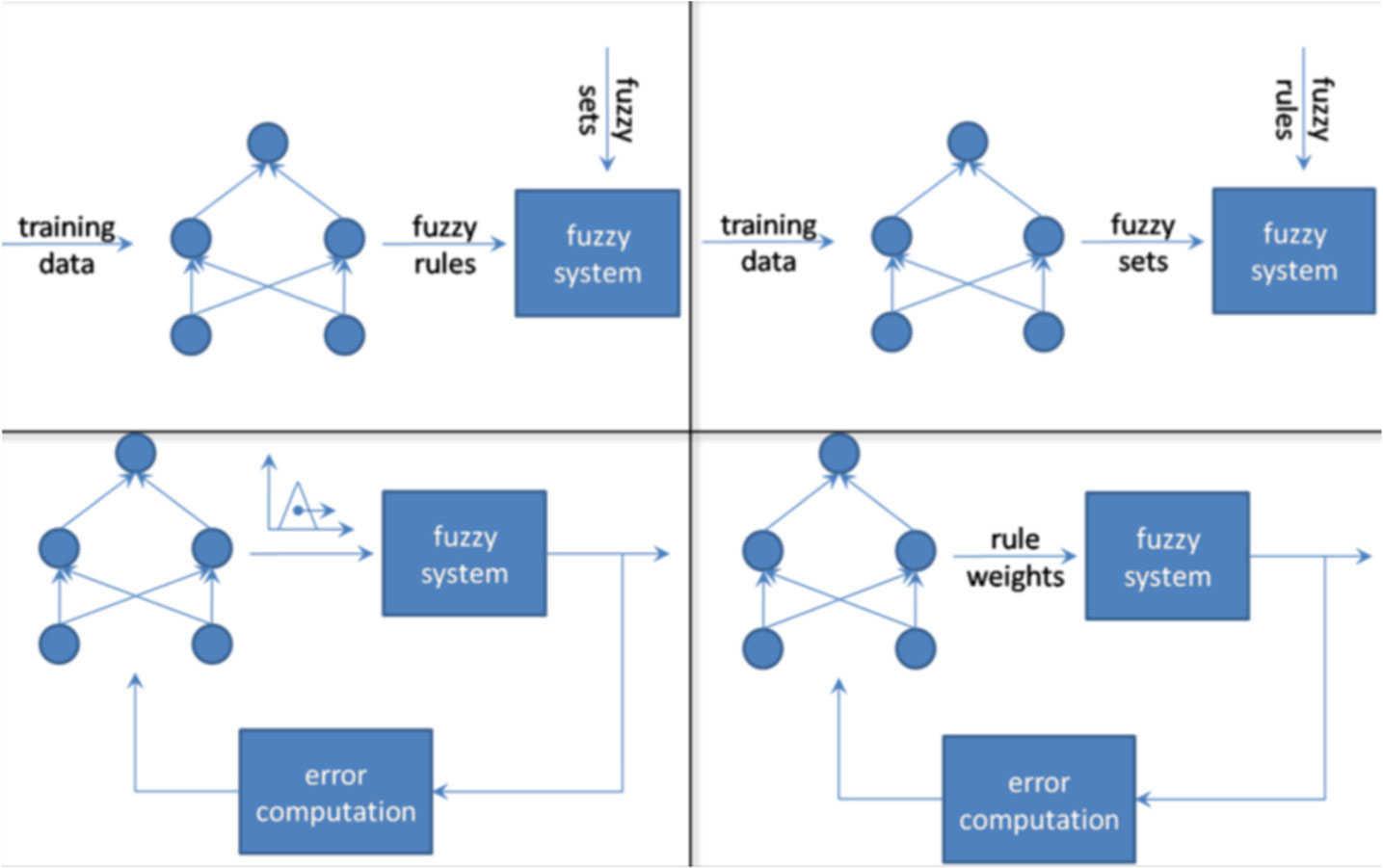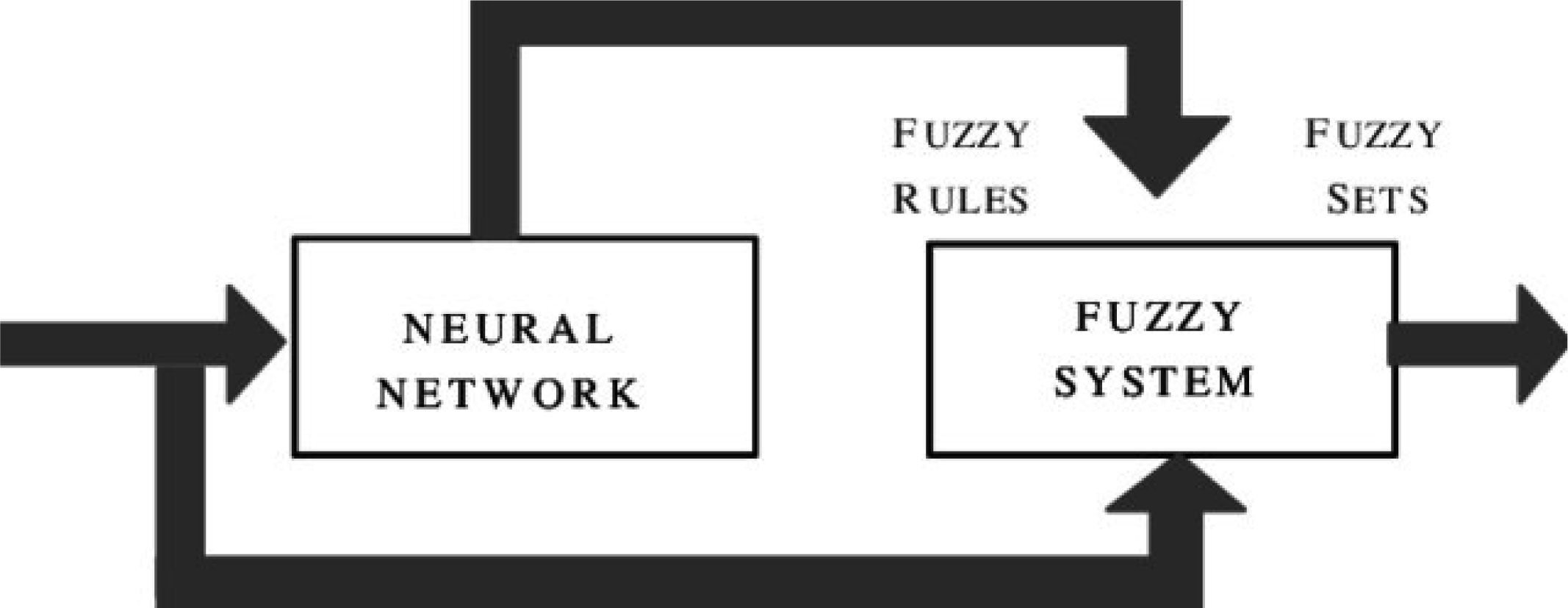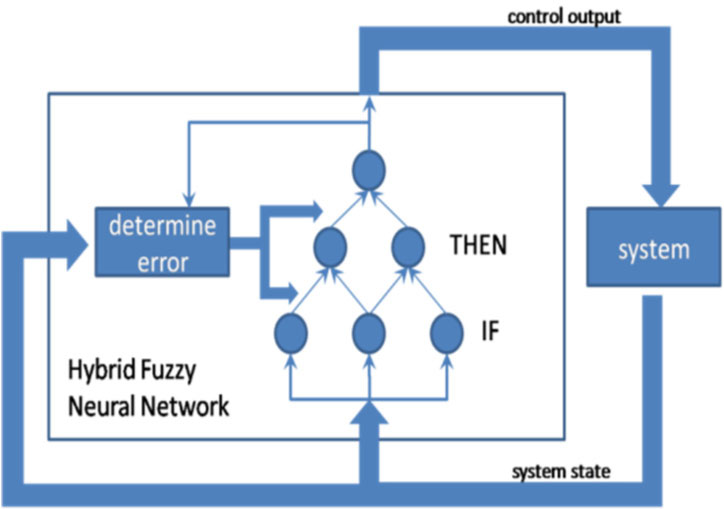| 1.
|
Andreas Rosenkranz, Max Marian, Francisco J. Profito, Nathan Aragon, Raj Shah,
The Use of Artificial Intelligence in Tribology—A Perspective,
2020,
9,
2075-4442,
2,
10.3390/lubricants9010002
|
|
| 2.
|
Ogbolu Melvin Omone, Eric Aggrey, Marta Takacs, Miklos Kozlovszky,
2020,
Implementation of A Fuzzy Logic Progression For Alcohol Addicts Using Fuzzy Control System(FCS),
978-1-7281-7352-8,
161,
10.1109/SISY50555.2020.9217079
|
|
| 3.
|
Mengya Zhu, Dengkai Chen, Jingluan Wang, Yiwei Sun,
Analysis of oceanaut operating performance using an integrated Bayesian network aided by the fuzzy logic theory,
2021,
83,
01698141,
103129,
10.1016/j.ergon.2021.103129
|
|
| 4.
|
Celestine Iwendi, Kainaat Mahboob, Zarnab Khalid, Abdul Rehman Javed, Muhammad Rizwan, Uttam Ghosh,
Classification of COVID-19 individuals using adaptive neuro-fuzzy inference system,
2021,
0942-4962,
10.1007/s00530-021-00774-w
|
|
| 5.
|
Johnpaul C.I., Munaga V.N.K. Prasad, S. Nickolas, G.R. Gangadharan,
Fuzzy representational structures for trend based analysis of time series clustering and classification,
2021,
222,
09507051,
106991,
10.1016/j.knosys.2021.106991
|
|
| 6.
|
Fei Su, Hong Wang, Linlu Zu, Yan Chen,
Closed-loop modulation of model parkinsonian beta oscillations based on CAR-fuzzy control algorithm,
2022,
1871-4080,
10.1007/s11571-022-09820-3
|
|
| 7.
|
Noureen Talpur, Said Jadid Abdulkadir, Hitham Alhussian, Mohd Hilmi Hasan, Norshakirah Aziz, Alwi Bamhdi,
Deep Neuro-Fuzzy System application trends, challenges, and future perspectives: a systematic survey,
2023,
56,
0269-2821,
865,
10.1007/s10462-022-10188-3
|
|
| 8.
|
Sandeep Kumar Sunori, Amit Mittal, Pradeep Juneja, P.G. Om Prakash, Richa Alagh, Sudhanshu Maurya,
2021,
Prediction of Rainfall using GRNN and Neurofuzzy Techniques,
978-1-6654-1836-2,
1,
10.1109/GCAT52182.2021.9587819
|
|
| 9.
|
Arkadiusz Lewicki, Krzysztof Pancerz, Leszek Puzio,
The temporal inference with the use of ant-based clustering algorithm and flow graphs in the problem of prognosing complications of medical surgical procedures,
2021,
17,
1795-6889,
10.14254/1795-6889.2021.17-3.3
|
|
| 10.
|
Sahar Qazi, Naiyar Iqbal, Khalid Raza,
2022,
Chapter 12,
978-981-16-9220-8,
201,
10.1007/978-981-16-9221-5_12
|
|
| 11.
|
Jing Wang, Long Yu, Shengwei Tian,
MsRAN: a multi-scale residual attention network for multi-model image fusion,
2022,
60,
0140-0118,
3615,
10.1007/s11517-022-02690-1
|
|
| 12.
|
R. Hadjouti, H. Mohand Kaci, F. Benzina, J. N. Furze, Xinhua He,
Enhancing agriculture recovery of,
2022,
60,
1838-675X,
850,
10.1071/SR21320
|
|
| 13.
|
Kanika Garg, Naveen Chauhan, Rajeev Agrawal,
Optimized Resource Allocation for Fog Network using Neuro-fuzzy Offloading Approach,
2022,
47,
2193-567X,
10333,
10.1007/s13369-022-06563-5
|
|
| 14.
|
Supriya Singh, D. P. Vidyarthi,
2023,
Chapter 35,
978-3-031-27608-8,
449,
10.1007/978-3-031-27609-5_35
|
|
| 15.
|
Muhammad Zia Rahman, Muhammad Azeem Akbar, Víctor Leiva, Abdullah Tahir, Muhammad Tanveer Riaz, Carlos Martin-Barreiro,
An intelligent health monitoring and diagnosis system based on the internet of things and fuzzy logic for cardiac arrhythmia COVID-19 patients,
2023,
154,
00104825,
106583,
10.1016/j.compbiomed.2023.106583
|
|
| 16.
|
Xi-Le Wei, Yu-Lin Bai, Jiang Wang, Si-Yuan Chang, Chen Liu,
Parkinsonian oscillations and their suppression by closed-loop deep brain stimulation based on fuzzy concept,
2022,
31,
1674-1056,
128701,
10.1088/1674-1056/ac8cd8
|
|
| 17.
|
Adam Szulc, Piotr Prokopowicz, Krzysztof Buśko, Dariusz Mikołajewski,
Model of the Performance Based on Artificial Intelligence–Fuzzy Logic Description of Physical Activity,
2023,
23,
1424-8220,
1117,
10.3390/s23031117
|
|
| 18.
|
Issah M. Alhamad, Riad Saraiji,
Indoor illuminance selection procedure using fuzzy techniques,
2022,
62,
23527102,
105362,
10.1016/j.jobe.2022.105362
|
|
| 19.
|
Wınıta SULANDARİ, Yudho YUDHANTO, Sri SUBANTİ, Etik ZUKHRONAH, Subanar SUBANAR, Muhammad Hisyam LEE,
Forecasting Tourist Arrivals to Sangiran Using Fuzzy with Calendar Variations,
2022,
2147-9100,
10.30519/ahtr.990903
|
|
| 20.
|
Narges Mohebbi, Meysam Alavi, Mehrdad Kargari,
2022,
Determining COVID-19 Severity with Fuzzy Inference System,
978-1-6654-8027-7,
1,
10.1109/CSICC55295.2022.9780483
|
|
| 21.
|
Cristiano Hora Fontes,
Refinement of the feedforward network in multi-class classification problems using a hybrid approach combining supervised clustering and a fuzzy classifier,
2022,
115,
09521976,
105242,
10.1016/j.engappai.2022.105242
|
|
| 22.
|
Amelia J. Garner, Reza Saatchi, Oliver Ward, Daniel P. Hawley,
Juvenile Idiopathic Arthritis: A Review of Novel Diagnostic and Monitoring Technologies,
2021,
9,
2227-9032,
1683,
10.3390/healthcare9121683
|
|
| 23.
|
Sindhu Rajendran, B. Sahana, Shaik Farheen, B. N. Meghana, Sona Theresa Babu,
2023,
Chapter 11,
978-3-031-26331-6,
165,
10.1007/978-3-031-26332-3_11
|
|
| 24.
|
Sandeep Kumar Sunori, Amit Mittal, Pradeep Juneja,
2023,
Design of Neurofuzzy Models for Biological Oxygen Demand Prediction,
979-8-3503-4664-0,
86,
10.1109/ICEARS56392.2023.10085535
|
|
| 25.
|
Chérubin Mugisha, Incheon Paik,
Bridging the Gap between Medical Tabular Data and NLP Predictive Models: A Fuzzy-Logic-Based Textualization Approach,
2023,
12,
2079-9292,
1848,
10.3390/electronics12081848
|
|
| 26.
|
Patricia Melin, Daniela Sánchez, Oscar Castillo,
Interval Type-3 Fuzzy Inference System Design for Medical Classification Using Genetic Algorithms,
2023,
13,
2075-1680,
5,
10.3390/axioms13010005
|
|
| 27.
|
Tal Sigawi, Yaron Ilan,
Using Constrained-Disorder Principle-Based Systems to Improve the Performance of Digital Twins in Biological Systems,
2023,
8,
2313-7673,
359,
10.3390/biomimetics8040359
|
|
| 28.
|
Siyuan Li, Chao Wang, Ying Wang,
Fuzzy evaluation model for physical education teaching methods in colleges and universities using artificial intelligence,
2024,
14,
2045-2322,
10.1038/s41598-024-53177-y
|
|
| 29.
|
Siren Zhao, Jilun Zhang, Jianbin Zhang,
Predicting UPDRS in Parkinson’s disease using ensembles of self-organizing map and neuro-fuzzy,
2024,
13,
2192-113X,
10.1186/s13677-024-00641-9
|
|
| 30.
|
John Byabazaire, Gregory M. P. O’Hare, Rem Collier, Declan Delaney,
IoT Data Quality Assessment Framework Using Adaptive Weighted Estimation Fusion,
2023,
23,
1424-8220,
5993,
10.3390/s23135993
|
|
| 31.
|
L. Garcia-del Rio, P. Diaz-Rodriguez, M. Landin,
2023,
978-1-83916-727-0,
313,
10.1039/BK9781837670055-00313
|
|
| 32.
|
Mohith Bekal Kar, Mangalpady Aruna, Bijay Mihir Kunar,
Fuzzy Logic-Based Rapid Upper Limb Assessment: A Novel Approach to Evaluate the Postural Risk of Dumper Operators,
2023,
104,
2250-0545,
1047,
10.1007/s40032-023-00986-1
|
|
| 33.
|
Celina Silvia Stafie, Irina-Georgeta Sufaru, Cristina Mihaela Ghiciuc, Ingrid-Ioana Stafie, Eduard-Constantin Sufaru, Sorina Mihaela Solomon, Monica Hancianu,
Exploring the Intersection of Artificial Intelligence and Clinical Healthcare: A Multidisciplinary Review,
2023,
13,
2075-4418,
1995,
10.3390/diagnostics13121995
|
|
| 34.
|
Ibrahim Alhamrouni, Nor Hidayah Abdul Kahar, Mohaned Salem, Mahmood Swadi, Younes Zahroui, Dheyaa Jasim Kadhim, Faisal A. Mohamed, Mohammad Alhuyi Nazari,
A Comprehensive Review on the Role of Artificial Intelligence in Power System Stability, Control, and Protection: Insights and Future Directions,
2024,
14,
2076-3417,
6214,
10.3390/app14146214
|
|
| 35.
|
Shokouh Arjmand, Reza Saboori Amleshi, Francisco S. Guimarães, Gregers Wegener,
Advancing psychiatric nosology through philosophical inquiry,
2024,
0924-2708,
1,
10.1017/neu.2024.21
|
|
| 36.
|
Yaron Ilan,
The Co-Piloting Model for Using Artificial Intelligence Systems in Medicine: Implementing the Constrained-Disorder-Principle-Based Second-Generation System,
2024,
11,
2306-5354,
1111,
10.3390/bioengineering11111111
|
|
| 37.
|
Jagmeet S. Kanwal,
From Information to Knowledge: A Role for Knowledge Networks in Decision Making and Action Selection,
2024,
15,
2078-2489,
487,
10.3390/info15080487
|
|
| 38.
|
Claudia I. Gonzalez,
Dementia Classification Approach Based on Non-Singleton General Type-2 Fuzzy Reasoning,
2024,
13,
2075-1680,
672,
10.3390/axioms13100672
|
|
| 39.
|
Suresh Kumar Srichandan, Santosh Kumar Majhi, Sudarson Jena, Kaushik Mishra, Radhakrishna Bhat,
A Secure and Distributed Placement for Quality of Service-Aware IoT Requests in Fog-Cloud of Things: A Novel Joint Algorithmic Approach,
2024,
12,
2169-3536,
56730,
10.1109/ACCESS.2024.3390723
|
|
| 40.
|
Prometeo Cortés-Antonio, Fevrier Valdez, Patricia Melin, Oscar Castillo,
Crips sets, type-1, and type-2 fuzzy sets in the context of linguistic variables and rule-based systems for cognitive computing,
2024,
10641246,
1,
10.3233/JIFS-219368
|
|
| 41.
|
Javaid Ahmad Shah, Deepak Sukheja, Govinda Patil, Tranjeet Sood, Malaya Nayak,
2024,
Chapter 5,
978-981-99-9178-5,
49,
10.1007/978-981-99-9179-2_5
|
|
| 42.
|
Supriya Singh, D.P. Vidyarthi,
An integrated approach of ML-metaheuristics for secure service placement in fog-cloud ecosystem,
2023,
22,
25426605,
100817,
10.1016/j.iot.2023.100817
|
|
| 43.
|
Alma Y. Alanis, Oscar D. Sanchez, Alonso Vaca-Gonzalez, Marco A. Perez-Cisneros,
2024,
9780443223419,
1,
10.1016/B978-0-44-322341-9.00010-0
|
|
| 44.
|
Luis Pastor Sánchez-Fernández,
Biomechanics of Parkinson’s Disease with Systems Based on Expert Knowledge and Machine Learning: A Scoping Review,
2024,
12,
2079-3197,
230,
10.3390/computation12110230
|
|
| 45.
|
Amar Salehi, Soleiman Hosseinpour, Nasrollah Tabatabaei, Mahmoud Soltani Firouz, Niloufar Zadebana, Richard Nauber, Mariana Medina‐Sánchez,
Advancements in Machine Learning for Microrobotics in Biomedicine,
2024,
2640-4567,
10.1002/aisy.202400458
|
|
| 46.
|
Rashid Baimukashev, Shirali Kadyrov, Cemil Turan,
Systematic Survey of Deep Fuzzy Computer Vision in Biomedical Research,
2024,
16,
1616-8658,
220,
10.26599/FIE.2024.9270043
|
|
| 47.
|
Changle Sun, Haitao Li, Jun-e Feng,
Construction of interpretable hierarchical fuzzy systems subject to incomplete data,
2025,
505,
01650114,
109273,
10.1016/j.fss.2025.109273
|
|
| 48.
|
Ioana Scrobota, Gilda Mihaela Iova, Olivia Andreea Marcu, Liliana Sachelarie, Siviu Vlad, Ioana Monica Duncea, Florin Blaga,
An Artificial Intelligence-Based Fuzzy Logic System for Periodontitis Risk Assessment in Patients with Type 2 Diabetes Mellitus,
2025,
12,
2306-5354,
211,
10.3390/bioengineering12030211
|
|
| 49.
|
Integrating Fuzzy Logic Systems with Deep Learning Applications Using SPSS,
2025,
4,
1,
10.46632/jdaai/4/1/1
|
|
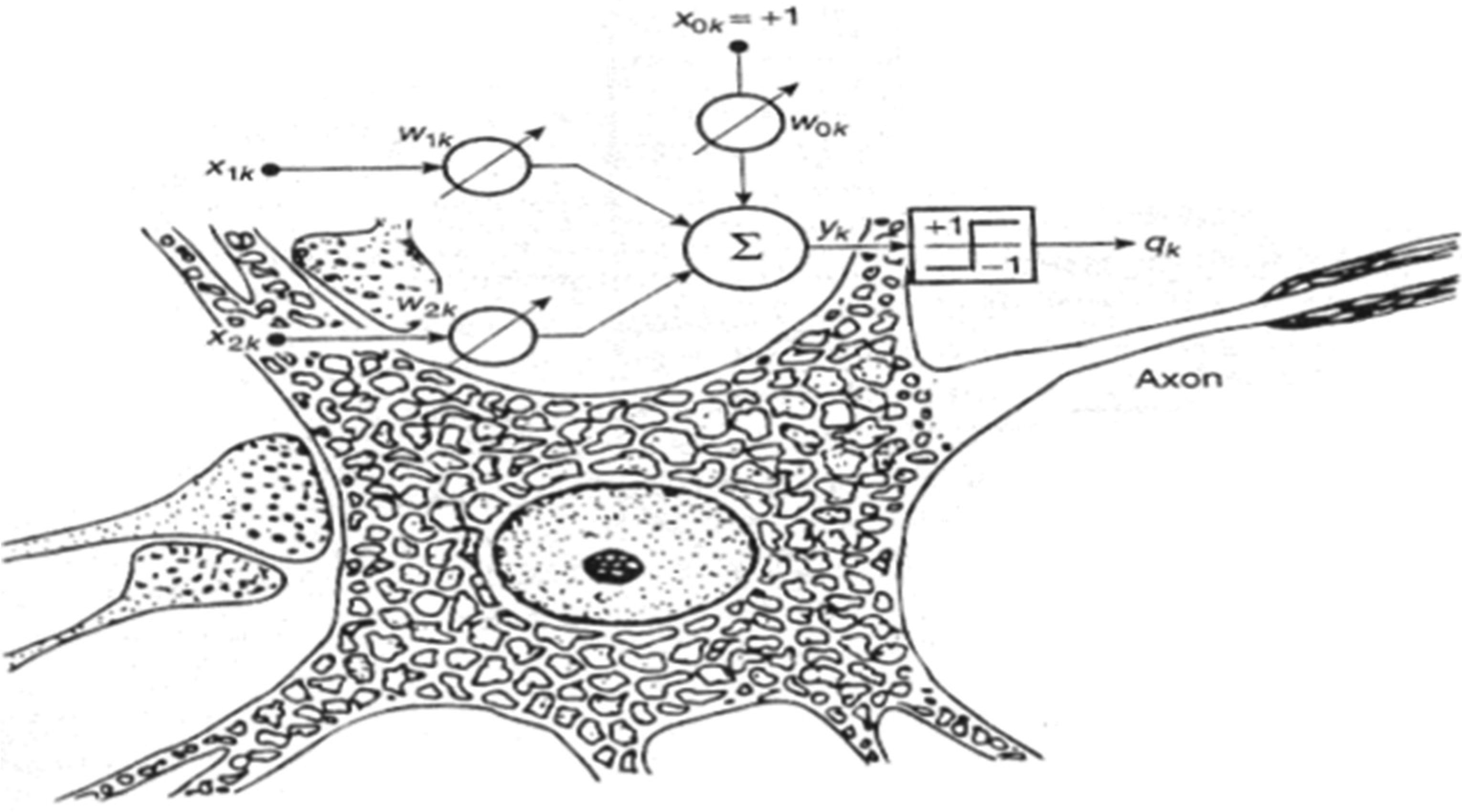









 DownLoad:
DownLoad:

